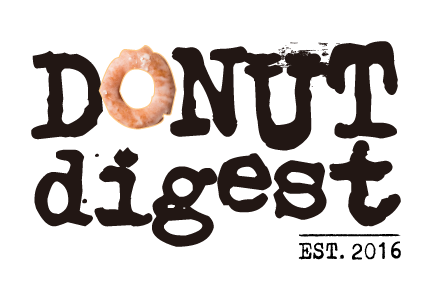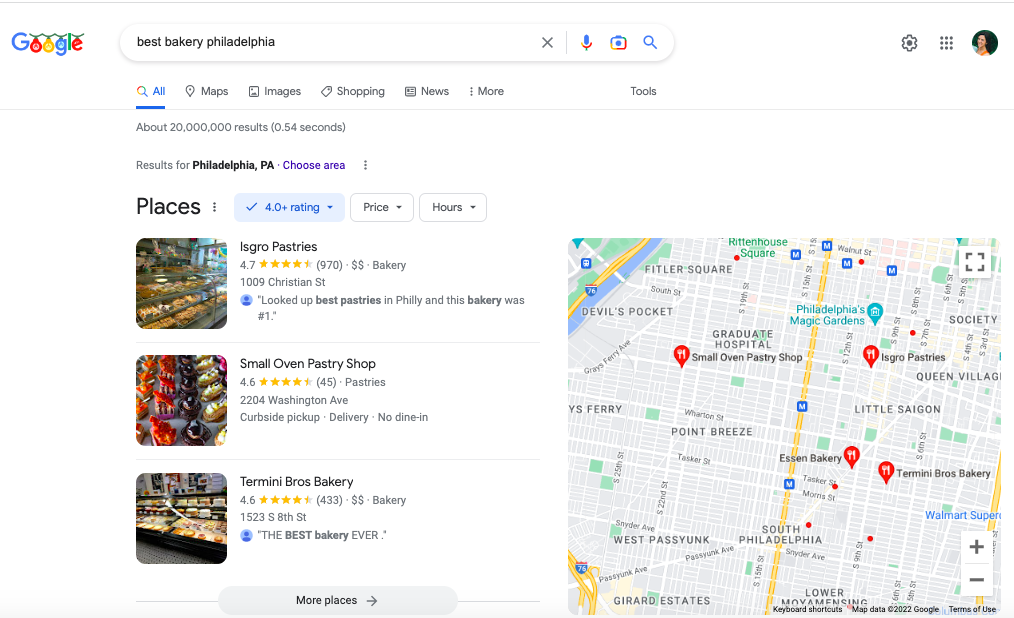Confused about SEO? You’re not alone.
Keywords and backlinks and schema, oh my! There is so much technicality to Search Engine Optimization, it’s easy to ignore. Most operators would rather focus on, well, operating their business. But what you might not know is that local search optimization is crucial to getting found online in 2024.
What is SEO?
SEO is the process of optimizing your online presence to increase local traffic, visibility, and brand awareness.
When someone searches for a business or place near their location, like a restaurant or bakery, they’ll find local results across Google in places like Google Maps and Search.
By optimizing your online presence via local SEO, you can secure a spot in Google’s coveted local pack (“map pack” or “3-pack”) or the experimental generative AI results at the top of search. This will attract users to your Google Business Profile or website, leading to more sales.
Here’s an example of a search engine result for “best bakery philadelphia”. Apart from any sponsored ads, the first thing you will see is the map of the top three results:
The goal of SEO is not only to be seen online. It’s to convert viewers and visitors into paying customers.
But to even show up on top, you have to consider the 200+ ranking factors in Google’s algorithm. And even then, there’s a ton Google won’t share about their secret sauce.
The good news is that SEO can be simple when you think about it like this:
“The only algorithm that matters is the heart, mind, and soul of the customer.” – Seth Besmertik, Co-Founder of Conductor, a content marketing platform
Think about your goal as a bakery owner
As a business owner, your primary goal is to create content that is helpful to customers and answers their questions.
When it comes to people searching online for local food options, they generally want to know…
#1: Basic business information
- Where to find you
- When you’re open
- How to get in touch
In the SEO world, this is commonly known as Name, Address and Phone Number (NAP). Add on email address and hours.
#2: A preview of your menu
This includes up-to-date menu items, descriptions, pricing and (most importantly) photos. Studies show that high-quality pictures online sell more food.
#3: A way to order
When it comes to local businesses, convenience is king. Most customers now expect to have the ability to order or book a reservation online. If they can’t find it, they’ll move on to a bakery or restaurant who does. This sentiment rings even truer in a post-pandemic, Amazon world where consumers want instant gratification.
#4: An idea of what other people think about you
We call this social proof or online reputation, whether it’s local awards, PR, reviews on Google, or user-generated content on Instagram or TikTok.
Final thoughts
If you keep up with this information across digital channels like your website, Google Business Profile, Yelp listing, social media, and more, you will rank well on Google and other search engines.
The more advanced aspects of SEO are related to on-page factors (how you configure, upload, and tag content on your website). But that’s for another post!



